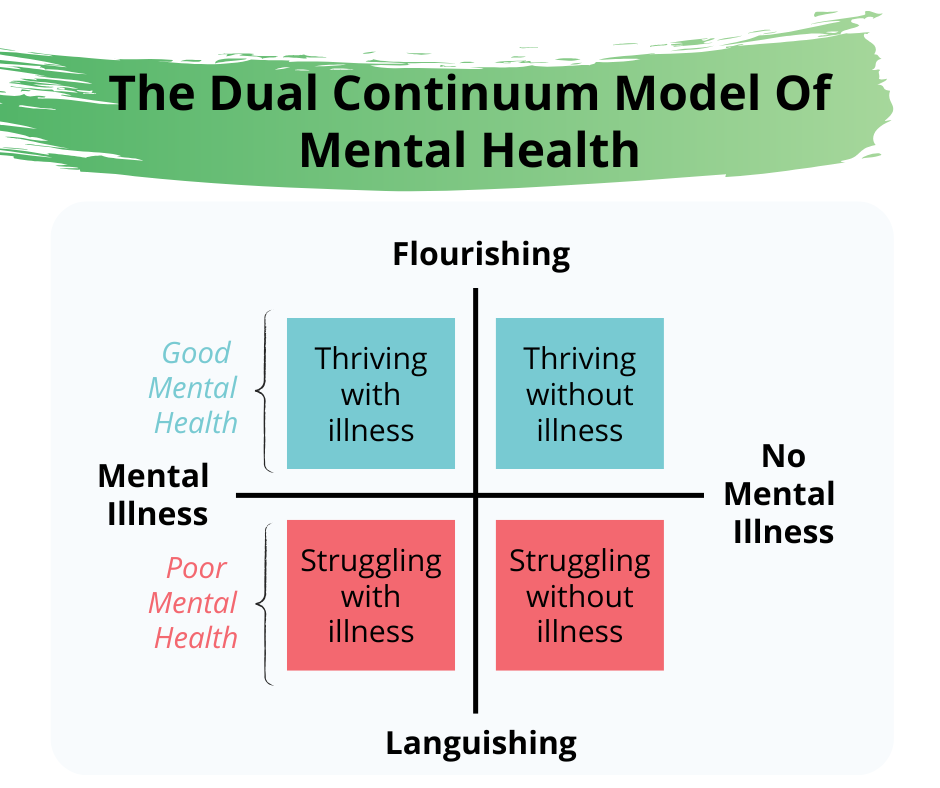Strength Training For Mental Health: It’s Not A Cure But It Can Help You Thrive
As a personal trainer who specializes in strength training for mental health, it’s been amazing to see people talking more openly about the connection between mental health and exercise.
The fact that exercise can boost mood, increase energy levels, improve mental wellbeing, and decrease symptoms of depression and anxiety is becoming common knowledge, and there’s a lot of research to back it up.
The Research On Exercise And Mental Health
The John W. Brick Mental Health Foundation created a report which analyzed the results of more than 1,200 studies done between 1990 and 2022. A whopping 89% of those studies found a positive, statistically significant relationship between exercise and mental health.
Since then, even more studies have come out. For example, a 2024 study compared the effects of different types of exercise on symptoms of depression and found that exercise can be even more effective than traditional treatments like medications and therapy.
Personally, I use strength training and running to support my own mental health. It has seriously changed my life.
Occasionally, though, I’ll talk to someone who’s skeptical. “Exercise isn’t going to cure mental health issues”, they’ll say. That’s true. But that’s not what I’m claiming.
Instead, I believe that strength training and other types of exercise can help you live the life you want, a life that makes you feel satisfied and fulfilled, despite mental health issues.
Here’s how.
A Modern View Of Mental Health
People used to think of mental health as pretty one dimensional. Either you have a mental health issue, or you don’t. But these days there’s a more complete and nuanced view, called “The Dual Continuum Model”, which is based on the work of Corey Keyes.
It involves viewing mental wellbeing as two separate dimensions.
There’s mental illness, which means having a mental health condition like depression, anxiety, ADHD, schizophrenia, etc. There’s also mental wellbeing, which is how you feel and function on a regular basis.
The horizontal line in the graph below represents the presence or absence of mental illness, with a range of severity in between.
The vertical axis represents mental wellbeing. It ranges from languishing, down at the bottom, to flourishing at the top.
Languishing is a negative emotional state. It’s when you feel sad, stressed, anxious, disconnected, lonely, you’re not managing conflict well, and you’re having a hard time getting through your day. You can experience that whether you have a mental illness or not.
Flourishing is also an emotional state, but a positive one. It’s when you feel happy, you have high life satisfaction, you feel confident, you’re managing your stress well, you have strong relationships, and you’re engaged with life. This is high functioning. As with languishing, you can be flourishing whether or not you have a mental illness.
Strength Training And Mental Health
Learning about this Dual Continuum Model of Mental Health and the fact that mental illness doesn’t define your life was incredibly freeing for me.
Since I was little, my brain has been predisposed towards depression and anxiety. I have a strong negativity bias when it comes to myself; my brain tends to focus on my worries and insecurities and brush away my successes and strengths. Medication and therapy, (which I do think are valuable and important for many people, please don’t get me wrong), didn’t help me as much as I wished they would.
For many years I thought: “this is just the way I am, and I can’t change it.” I felt hopeless.
Then I found strength training and I started to feel better. I believe that strength training changed my brain, and while I feel and think a lot differently than I used to, I’m still prone to some occasional depressive symptoms and anxiety.
Strength training didn’t cure my mental health, and I didn’t need it to. I can lead a happy and fulfilling life while having depression and anxiety. I can move myself up that vertical axis towards flourishing.
Strength training is a tool that helps me do that. It gives me a way to take action, to be proactive about my mental and physical wellbeing. It gives me confidence and calm, and helps me challenge my negativity bias and see that I am strong and capable of handling challenges.
It allows me to thrive and feel good about myself, so my depression and anxiety doesn’t hold me back from living the life I want. I’ve seen many other people experience the same benefits.
If You Need Help
To learn more about how strength training can improve mental health, check out my article here: The Mental Health Benefits Of Strength Training.
And if you’ve tried to exercise before but it hasn’t made you feel better, here’s my article with some tips for tweaking your exercise program to get a bigger mental health boost: Why Exercise Hasn’t Helped Your Depression And Anxiety.
To get started with Strength Training, download my FREE Strength Training 101 eBook, which teaches you the basics of setting up your own safe and effective workout program (including sample workouts).
For personalized assistance, contact me. I provide person training in-person and via Zoom, and I write personalized programs for clients to do on their own, guided by an app.


